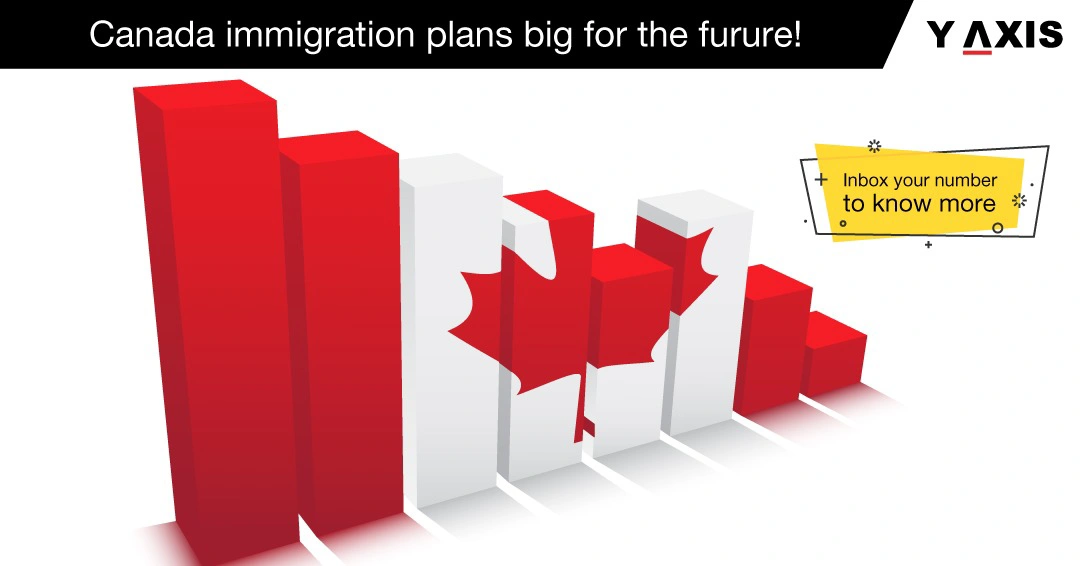Posted on March 18 2020
Canada immigration unveils plan to improve invite levels
By , Editor
Updated October 06 2023
Canada immigration is all set to take its plans to welcome immigrants to the next level. The announcement regarding this has been made on March 12, 2020. The country has plans to invite over one million newcomers as permanent residents in the next 3 years.
The target was revealed with the 2020-2022 Immigration Levels Plan of the federal government. The immigrant-friendly approach of the Canadian government is taken forward with this plan. The immigration levels are increased gradually. There is a definite time-bound plan. It will give stakeholders the time to plan measures needed to take care of a larger population.
The trend of rising immigration population in Canada has been happening for a while now. In 2018, 320,000 newcomers came to the country. In 2019, it increased to 341,000. Canada is aiming at admitting another 341,000 immigrants in 2020. Hence, the trend is kept not only steady but improving.
This is evident from Canada’s aim to welcome 351,000 newcomers in 2021. This gets better with 361,000 immigrants planned to be invited in 2022. The amazing scope and the way in which it's executed can, in fact, bring in 390,000 newcomers in 2022!
As a first, Canada is revealing their immigration plans to the public. Ever since the multi-year immigration level plans were reintroduced in 2017, the execution of them has been done very effectively. These plans help stakeholders like urban planners to do what’s needed to smoothly integrate newcomers economically and socially.
Canada has considered the role of immigrants essential in their economic, cultural and social development. It is the high level of immigration that helps the country to stay stable. It keeps Canada afloat in the face of problems like low birthrate, aging population, and fiscal pressures.
An estimate says that 9 million Canadians are set to reach the age of retirement within another decade. Without a considerable influx of immigrants, Canada will not be able to maintain a robust workforce and economy.
Economic class and its relevance
Economic class immigration forms a large part of Canada’s newcomers’ population. Express Entry programs, Provincial Nomination Program (PNP) and Quebec’s program form main entry points for these newcomers. Federal streams like Atlantic Immigration Pilot (AIP) also let immigrant crowd crossover to Canada.
In fact, 58% of Canada’s new immigrants come under the economic class. They are the largest contributors to the country’s economy too. Canada is targeting an annual rise in this class by nearly 10,000 immigrants.
The Canadian government is targeting a 20% increase in PNP admissions in 2022. Canada is all set to increase the number of migrants welcomed under its pilot programs. The country is aiming at welcoming 5,200 newcomers under pilot programs like:
- Rural and Northern Immigration Pilot
- Agri-Food Immigration Pilot
Putting these plans put into action, Canada is trying to achieve doubling the number of immigrants via these pilots by 2022.
The Canadian government has kept the AIP targets stable. The number of new immigrants expected is fixed at 5000. It will also become a permanent program.
Canada is yet to determine the immigrant intake levels under Quebec’s program for 2021 and 2022. The federal government will be consulting with Quebec about the major immigration system reforms the province is undertaking.
Also, 26% of immigrants will be accepted under the family class. The remaining immigrants, who form 16% of the whole, will be invited on humanitarian grounds. The immigration levels are aimed at 91,000 for the next 3 years. Thus, the humanitarian and compassionate immigrant stream will register the lowest growth.
Canada’s immigration levels through the times
With 300,000 immigrants, Canada’s immigration levels have reached standards of historic proportions. On a per-capita basis too, there have been high levels of achievement. Canada is now having an intake counting to 0.9% of its population. Even the US has 0.3% of its population even after getting 1 million immigrants annually.
At the peak of Canada’s immigrant intake by per-capita, it had welcomed 401,000 immigrants. This was just 5.3% of the country’s population. In today’s terms, this rate of intake would be 2 million immigrants.
The high standards of living in Canada is largely nourished by the increase in its immigration levels. With an aging population and weak labor force plaguing its progress, the country needs immigration to solve its economic shortcomings. With more young and skilled immigrants coming to Canada, the country can prosper the way it aspires to.
As the latest announcement suggests, Canada is on a path to surpass the threshold of 400,000 newcomers. With its readiness to welcome close to 3.5 million immigrants in this decade, it is aiming really high in terms of progress.
2020-2022 immigration levels plan summary
| 2020 | 2021 | 2022 | |
| Federal High Skilled | 91,800 | 91,150 | 91,550 |
| Federal Business | 750 | 750 | 750 |
| Economic Pilots | 5,200 | 7,150 | 9,500 |
| Atlantic Immigration Pilot Program | 5,000 | 5,000 | 5,000 |
| Provincial/Territorial Nominee Program | 67,800 | 71,300 | 73,000 |
| Quebec Skilled Workers and Business | 25,250 | To be determined | To be determined |
| Total Economic | 195,800 | 203,050 | 212,050 |
| Spouses, Partners, and Children | 70,000 | 70,000 | 70,000 |
| Parents and Grandparents | 21,000 | 21,000 | 21,000 |
| Total Family | 91,000 | 91,000 | 91,000 |
| Protected Persons in Canada and Dependents Abroad | 18,000 | 20,000 | 20,500 |
| Resettled Refugees - Government-Assisted | 10,700 | 10,950 | 11,450 |
| Resettled Refugees - Privately Sponsored | 20,000 | 20,000 | 20,000 |
| Resettled Refugees - Blended Visa Office-Referred | 1,000 | 1,000 | 1,000 |
| Total Refugees and Protected Persons | 49,700 | 51,950 | 52,950 |
| Total Humanitarian & Compassionate and Other | 4,500 | 5,000 | 5,000 |
| Overall Planned Permanent Resident Admissions | 341,000 | 351,000 | 361,000 |
The government of Canada will present its next immigration levels plan by November 2020. This plan presentation will reveal the target for 2023.
If you are looking to Study, Work, Visit, Invest or Migrate to Canada, talk to Y-Axis, the World’s No.1 Immigration & Visa Company.
If you found this blog engaging, you may also like…
Tags:
Canada immigration
Share

